|
My wife's family is a history of strong women, forced to raise their families alone during challenging but exciting times. I managed to trace my son's maternal line to his 3rd great grandmother, Sadie Simons, born in 1867, the daughter of immigrants. The paper trail on Sadie and her family is still sketchy and there is a lot of work remaining, however, we manage to pick up her story around 1900. Just before the end of the 19th century, the young family of William and Sadie Tabor and their two small children, Frank and Mildred, made the journey from Atlanta, Georgia to New York City, likely by rail to the coast and then by steamship from Norfolk, Virginia, past the watchful gaze of the Statue of Liberty, to dock in New York harbor. The Tabors were not immigrants but they were Ashkenazi Jews, only a generation removed the often violent antisemitism of Germany and Eastern Europe. However, while I know that the Tabors were ethnically Ashkenazim, I am not certain about their religious beliefs. Sadie and the children were Christians before 1910 and Mildred was confirmed and married in the Episcopal church, but I'm not certain when the family converted; they could have converted in New York or their parents may have converted before they left Europe. The Tabors settled into apartment 397 at 1986 2nd Avenue, East Harlem. East Harlem was an incredibly diverse and dynamic neighborhood, with sizable, thriving immigrant communities of Ashkenazim and Italians. However, for this enormous surge of Jewish immigrants, Harlem was a stepping stone to a better life. In 1869, there were only 12 Jews in Harlem, swelling to 200,000 by 1915, but then falling to less than 5,000 by 1930 as their rising success allowed them to move to more desirable neighborhoods. William Tabor, whose original given name was Isidor, was born in 1865 in Pennsylvania to German immigrants. In the mid-19th century Germany, Jews were becoming increasingly integrated into German life and could escape most restrictions if they became baptized into Christianity. Professional Jews restricted in their careers by religious laws often converted as did secular Jews, hoping to better fit in to German life. It's possible that William’s family may have converted before moving to America. Sadie Simons was born in 1867 in Maryland, possibly Baltimore, which had a large Jewish population. Her parents were born in England but the family was originally from Eastern Europe. Large numbers of Ashkenazi Jews had immigrated to England during the 19th century to escape violent anti-Jewish riots and rising persecution in countries such as Russia, Poland, and the Baltics. While restrictions were relatively light in England, allowing Jews to integrate more fully into society, they still existed, motivating many thousands to seek baptism into the Church of England. However, it is also possible that while their families may have assimilated, they did not convert from Judaism. Beginning in the 19th century, European Jews flooded into American to escape persecution and restrictions but still keep their faith. Unlike even the most liberal countries in Europe, in America a Jew could have full rights and also openly practice their religion. Regardless of whether their families converted before or after migrating to America, they may have still kept a cultural connection to their Ashkenazi heritage, as did many converted Jews. This connection is important because it would explain how Sadie and William met, born hundreds of miles apart but both potentially born to families of converted Jews. In any event, William and Sadie did meet and they were married in 1892 in Philadelphia, Pennsylvania, where their son Frank was born 2 years later, on October 27, 1893. Shortly after, the family moved to Atlanta, Georgia, where they had a daughter, Mildred, in March of 1897. They had one other child but he or she did not survive to 1900. To move into a growing, upwardly mobile Jewish neighborhood suggests that William and Sadie may have still identified with their Jewish heritage. William worked as a salesman, Sadie was a housewife, and the children attended school. On August 3, 1901, they had another child, Walter Henry. On Walter’s birth certificate, the father is noted as Isidor Tabor, suggesting that the Tabors had changed their name to fit better into American life. The Tabors appeared to have been quite successful and the family moved to the other side of Central Park from Harlem, to the more upscale Upper West Side, to apartment 56, 67 West 101st Street. Around this time, the Upper West Side was a popular neighborhood for well-to-do German Jews. again suggesting that the family may have been still Jewish or, at the very least, had a cultural connection to the Jewish community. The family also employed a live-in maid named Cecilia Force, a 64 year old Englishwoman. Tragically, sometime prior to 1905, before his 40th birthday, William died, leaving Sadie alone to raise their three children. Sadie must have scrambled to find employment, which she did as a dressmaker. In New York during this period, a dressmaker typically meant making from $10 to $15 a week working as a seamstress at a dress factory in the Garment District of Manhattan. Dressmaking was a very popular profession among Jewish immigrants and many of the factories were owned by Jewish businessmen. In addition to Sadie taking the streetcar down to the Garment District every day, the family also had to downsize. They let go of Cecilia and moved smaller apartment a few blocks away. By 1910, Frank has quit school and was working as a clerk. He was also a successful boxer, picking up fights to supplement his family's incomes. The family lived only a few blocks from St. Michael’s Church, an Episcopal church that still stands at 225 West 99th Street and Amsterdam Avenue. The Episcopal faith originated after the American Revolution, transforming itself from the Church of England to a more acceptable American form. If Sadie was not already an Episcopalian, she became one now. Her daughter, Mildred, received confirmation at the church in 1912, would get married there, and baptize her firstborn there. By 1915, the family had moved two blocks east to 52 Manhattan Avenue. The family was living there when Mildred, now 18, met Russell Tenure, age 24. Russell lived with his brother, Percy, in an apartment only one block away and worked as a chauffeur. Somehow they young couple managed to find some time alone together. When Sadie and Russell’s family discovered that Mildred was pregnant, the two were quickly married on August 21, 1915, and they both moved in with Sadie. Seven months later, Mildred gave birth to her daughter, Sadie’s first grandchild, Ethel Elizabeth, at Sadie’s home. During this time, the rest of the world was gripped in the World War. Jews were torn in their loyalties as many were hostile to Russia, which relentlessly persecuted Jews, and friendly to Germany, where Jews enjoyed many rights. However, the press was ferociously against the Germans and the U-boat sinking of the cruise ship, Lusitania, and her over 1200 passengers, resulted in fierce condemnation from the New York newspapers. In 1916, the United States had invaded Mexico in a response to a Mexican attack on the town of Columbus, New Mexico. Russell, who had enlisted with the New York National Guard in 1912, was called up to join the 12th New York Infantry on June 9. He shipped out with his unit to New Mexico, to guard the U.S. border against possible Mexican attacks. He served as a wagoner for 6 weeks, transporting supplies and soldiers, until he was discharged on August 10. While Mildred and Russell had a troubled marriage and lived apart, at least some of the time, they still had a relationship, In 1928, Russell, Mildred, Sadie, and the children took a vacation together to Oyster Beach, New York. While Russell was away serving with the 12th NY infantry, at 2 AM on July 30, 1916, massive explosions tore through the munition warehouses on New York's Black Tom island, killing several people and causing staggering damage. Even the Statue of Liberty was punctured by flying shrapnel. The city was gripped with rumors that German Imperial agents had deliberately started the fire that devastated the munitions warehouses. There was a building sense of inevitability that the United States would be entering the war. Against this backdrop, life moved on. Sadie was a thrifty saver and, in 1917, likely with the help of her son, Frank, managed to save enough money to purchase a $9,000 house in a quiet neighborhood at 2409 Cornelia Street, Queens where she lived with her 3 children, Russell, and granddaughter. In 1917, Frank, now 24, was called up in the draft for World War I. Frank appealed for an exemption based on needing to support his widowed mother. There is no indication whether he served but, regardless, by 1918, Frank moved out west to San Francisco, where he laid down his boxing gloves and found work managing and promoting professional boxers. He also met and married Margaret Houghton, living with her parents for a short time. In 1920, Frank and Margaret had their only child, Marie. In 1918, Walter also left home, to work as a steward’s assistant on the merchant ship Santa Marta, which worked for the United Fruit Company, running cargo between New York and Central America. He then worked on the Brilliant for several years, running cargo between New York and Tampico, Mexico. In 1921, Walter took jobs on other ships, sailing to ports around the world. Although there is no record of where he served, Russell joined up to fight the Germans in 1917 or 1918. Given his past military record, he likely served by transporting supplies or men. The war ended on November 11, 1918, and the first overseas troops were mustered out in April 1919. We know that Russell was home a few months earlier, suggesting that he was stationed closer to home. Mildred and Russell had their second child, Franklin Tenure, on October 5, 1919. In 1920, Mildred and Russell and their 2 children still lived with Sadie and Walter but they moved out shortly afterwards to upstate New York, at 156 Winthrop St, Watertown, where Russell worked as a chauffeur. In 1921, Mildred and Russell had their 3rd child, Edith. However, sometime prior to 1925, Mildred and her children returned to live with Sadie in Queens. At this time, Sadie was 58 and retired and Mildred picked up work as a bookkeeper while all 3 children attended school. Walter finally settled down in New York in 1925, marrying a woman named Mabel. He found work as a chauffeur, apparently a very common job in New York City. Walter and Mabel moved to an apartment in the Bronx, about a 45 minute drive north of Sadie’s house. Walter and Mabel had their son, Sadie’s fifth grandchild, Walter Jr. on March 21, 1929. However, it all came to a bad ending a year later. At this time in New York, it was very difficult to receive a divorce but Russell very much wanted one because he had met someone new: Rose Ethel Blausten. On September 28, 1929, without first obtaining his divorce, Russell married Rose. Unfortunately for Russell, the State of New York quickly discovered he was still married to Mildred and they arrested him on the charge of bigamy, a very serious offense. After a short trial, Russell was convicted and sentenced to 5 years imprisonment at Sing Sing Prison. In 1930, Justice Byrne granted Mildred a divorce from Russell and the family would never see him again. Mildred continued working as a bookkeeper and was a dedicated member of the Ridgewood Democratic Club. She raised three strong, upright children who gave her twelve grandchildren. Frank's fame as a boxing manager grew and joined the Marines in WWII, at the age of 48, to train leathernecks in hand to hand combat. He remarried to a woman named Edith and became a Mason. After his long, exciting career as a merchant sailor, Walter worked as a driver for a trucking company in New York. Sadie's children sold her house and Mildred purchased a new house at 6057 67th Ave in Queens. a few blocks east of Sadie’s house. Mildred’s daughter, Ethel, was 15 when her grandmother died. After the move to her new house, she would live only 7 blocks from her future husband, Joseph Bernegger. Meanwhile, Frank Tabor was having his own marital problems, divorcing Margaret in 1930. However, he was also having a very successful career as a renowned boxing manager and fight promoter, managing the career of many successful fighters such as Korean boxer Jo Teiken, ranked sixth the in world.
Sadly, Sadie did not have many years to enjoy her children's families and successes. She died of renal failure in her home on December 17, 1931 at the age of 64. She was survived by her 3 children and at least 5 grandchildren. |
Archives
2023 JAN FEB MAR APR MAY JUN JUL AUG SEP 2022 JAN FEB MAR APR MAY JUN JUL AUG SEP OCT NOV DEC 2021 JAN FEB MAR APR MAY JUN JUL AUG SEP OCT NOV DEC 2020 JAN FEB MAR APR MAY JUN JUL AUG SEP OCT NOV DEC 2019 JAN FEB MAR APR MAY JUN JUL AUG SEP OCT NOV DEC 2018 JAN FEB MAR APR MAY JUN JUL AUG SEP OCT NOV DEC 2017 JAN FEB MAR APR MAY JUN JUL AUG SEP OCT NOV DEC 2016 JAN FEB MAR APR MAY JUN JUL AUG SEP OCT NOV DEC 2015 JAN FEB MAR APR MAY JUN JUL AUG SEP OCT NOV DEC 2014 OCT NOV DEC Categories |
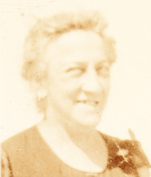

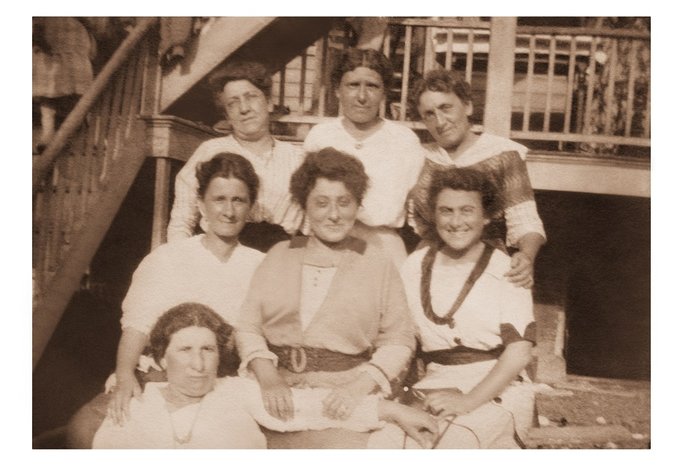
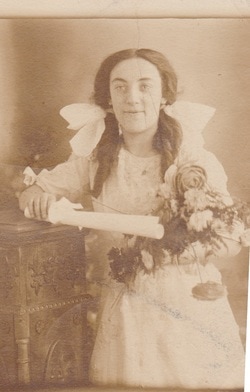
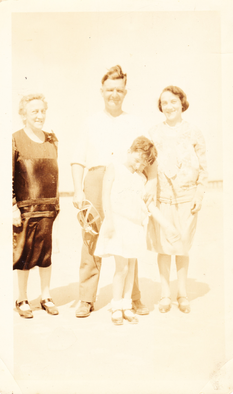
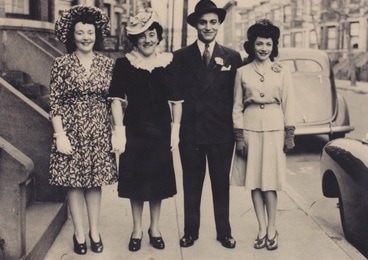
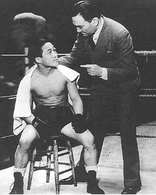
 RSS Feed
RSS Feed